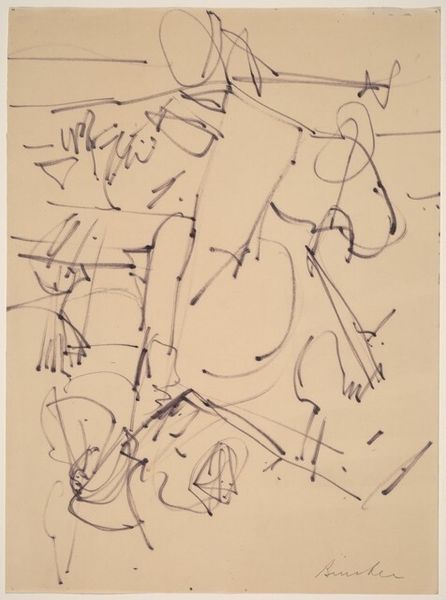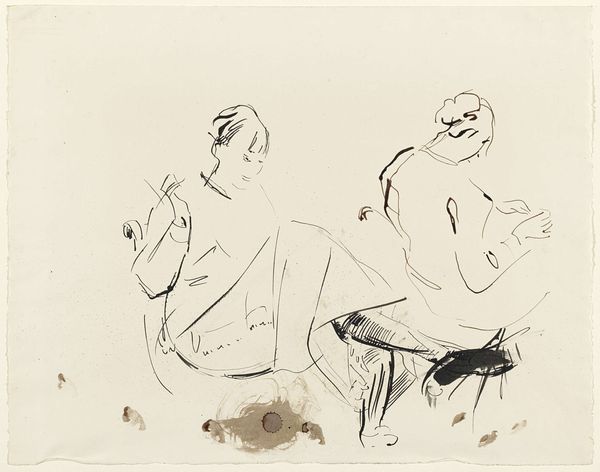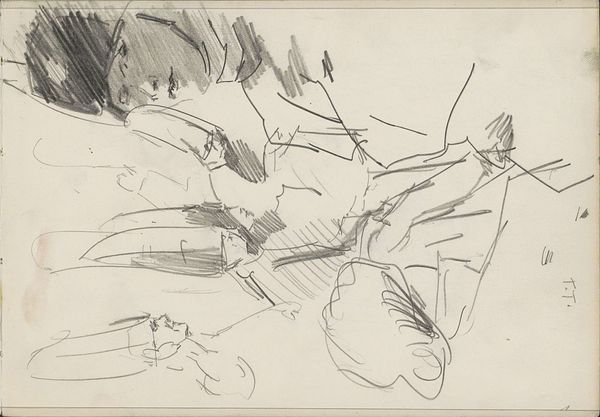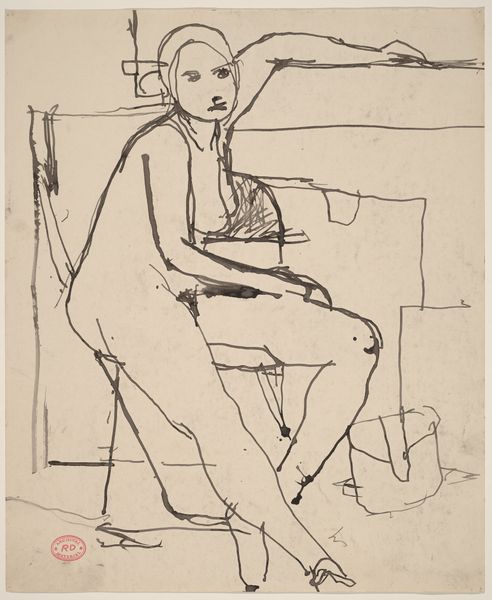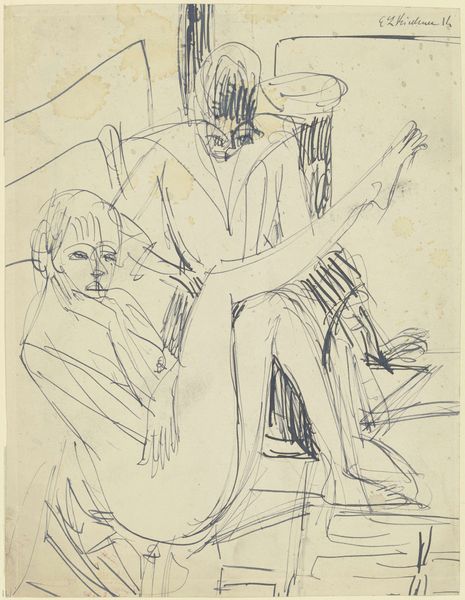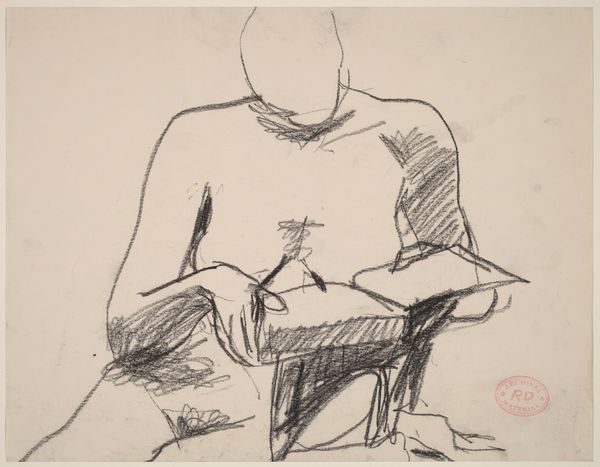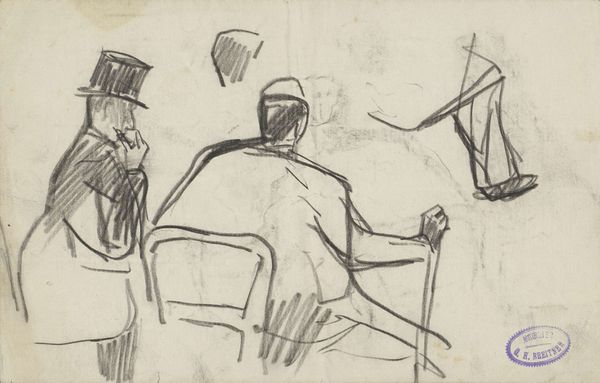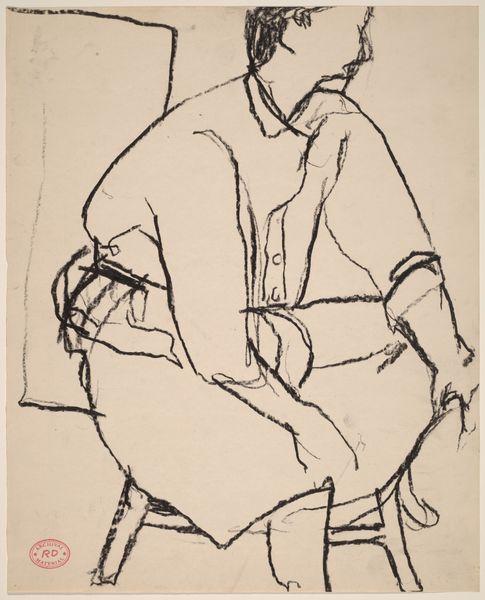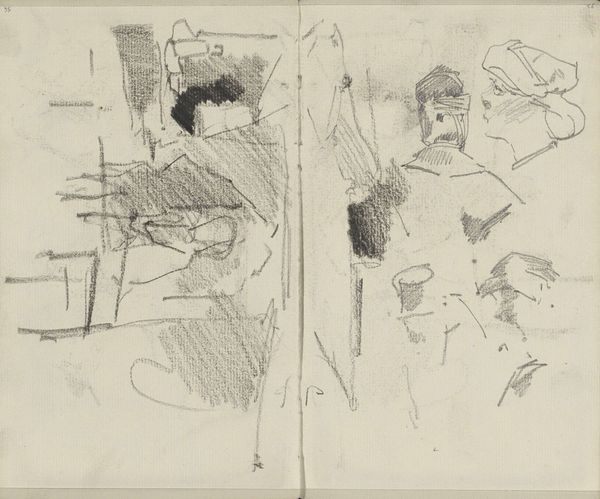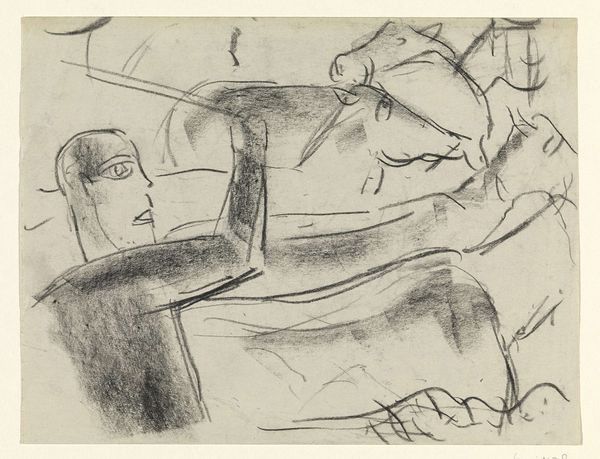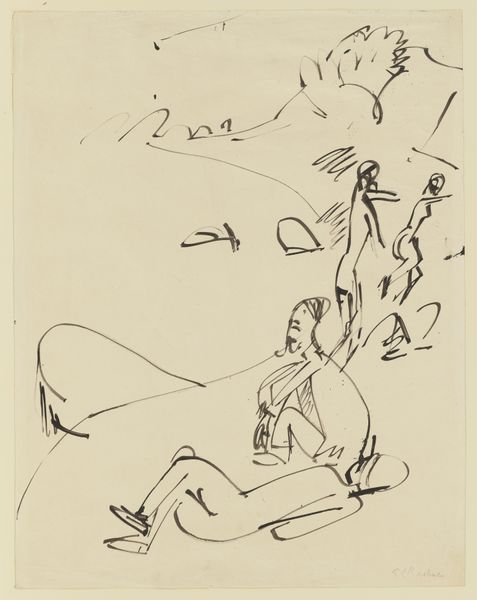![Untitled [seated figures] by Richard Diebenkorn](/_next/image?url=https%3A%2F%2Fd2w8kbdekdi1gv.cloudfront.net%2FeyJidWNrZXQiOiAiYXJ0ZXJhLWltYWdlcy1idWNrZXQiLCAia2V5IjogImFydHdvcmtzL2MxZDJiMTY4LWY5NGQtNDY5Yi1iYTE5LWRkYWM2MGI5ZmNkMS9jMWQyYjE2OC1mOTRkLTQ2OWItYmExOS1kZGFjNjBiOWZjZDFfZnVsbC5qcGciLCAiZWRpdHMiOiB7InJlc2l6ZSI6IHsid2lkdGgiOiAxOTIwLCAiaGVpZ2h0IjogMTkyMCwgImZpdCI6ICJpbnNpZGUifX19&w=3840&q=75)
drawing, charcoal
#
portrait
#
drawing
#
ink drawing
#
self-portrait
#
pen sketch
#
figuration
#
bay-area-figurative-movement
#
group-portraits
#
abstraction
#
line
#
charcoal
Dimensions: overall: 43.3 x 27.8 cm (17 1/16 x 10 15/16 in.)
Copyright: National Gallery of Art: CC0 1.0
Curator: This ink and charcoal drawing, simply called "Untitled [seated figures]" is by Richard Diebenkorn, created sometime between 1955 and 1967. What leaps out at you? Editor: Well, immediately, it's this feeling of relaxed observation. The casual pose of the figures, the spare lines, it’s like catching a glimpse into someone’s afternoon. Almost voyeuristic, you know? Curator: Precisely! Diebenkorn really captures a sense of intimacy with such economy. It's more than just a portrait; it's an environment created with lines. The visible window pane behind them subtly emphasizes that feeling of ‘peeking in’ that you mentioned. Editor: It also makes me think about the role of art itself. Both figures appear to be engaged with something in their hands. One even has an object resting in his hands that is resting over his crotch, which is an erotic touch to the seemingly normal domestic setting. Is Diebenkorn suggesting art’s self-reflectivity? That’s very typical for how an artist views the world, but these days that just isn't possible given today’s society that over saturates its audience to consume everything all at once. Curator: The open composition leaves it unresolved; it suggests a momentary, fragmented narrative. There’s that still life at the bottom. Diebenkorn adds a second still life into a figural work; however, one is sketched atop a work while the other, the wine and the accoutrements, lives in our figural scene in three-dimensional existence. Editor: I feel the abstraction lends it such modernity! He uses very few, careful, distinct lines that suggest a deep complexity. No shading, no embellishment, but plenty of substance, in many regards. I admire this balance Diebenkorn offers the viewer: familiar yet distanced; concrete yet interpretive. Curator: Absolutely. The figures, almost dissolving into line and space, invite a more interpretive reading. We get to feel a presence, rather than just passively see one; but it also reflects a period of great transition in American art—between figurative and abstract approaches. Diebenkorn holds the two spheres beautifully and tentatively. Editor: So true. It is that quiet negotiation of space and form that makes this ‘Untitled’ piece resonate so strongly. Its simplicity conceals profound depths and it mirrors the cultural history from where it comes. Curator: Indeed. This peek into Diebenkorn's artistic negotiations shows us not just what he saw, but how he learned to make sense of it all.
Comments
No comments
Be the first to comment and join the conversation on the ultimate creative platform.

